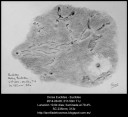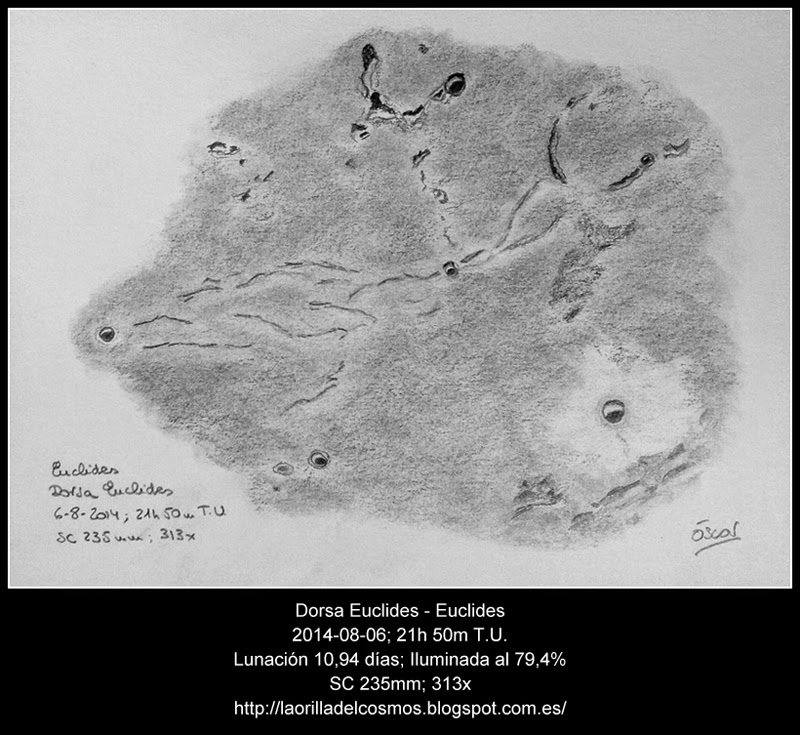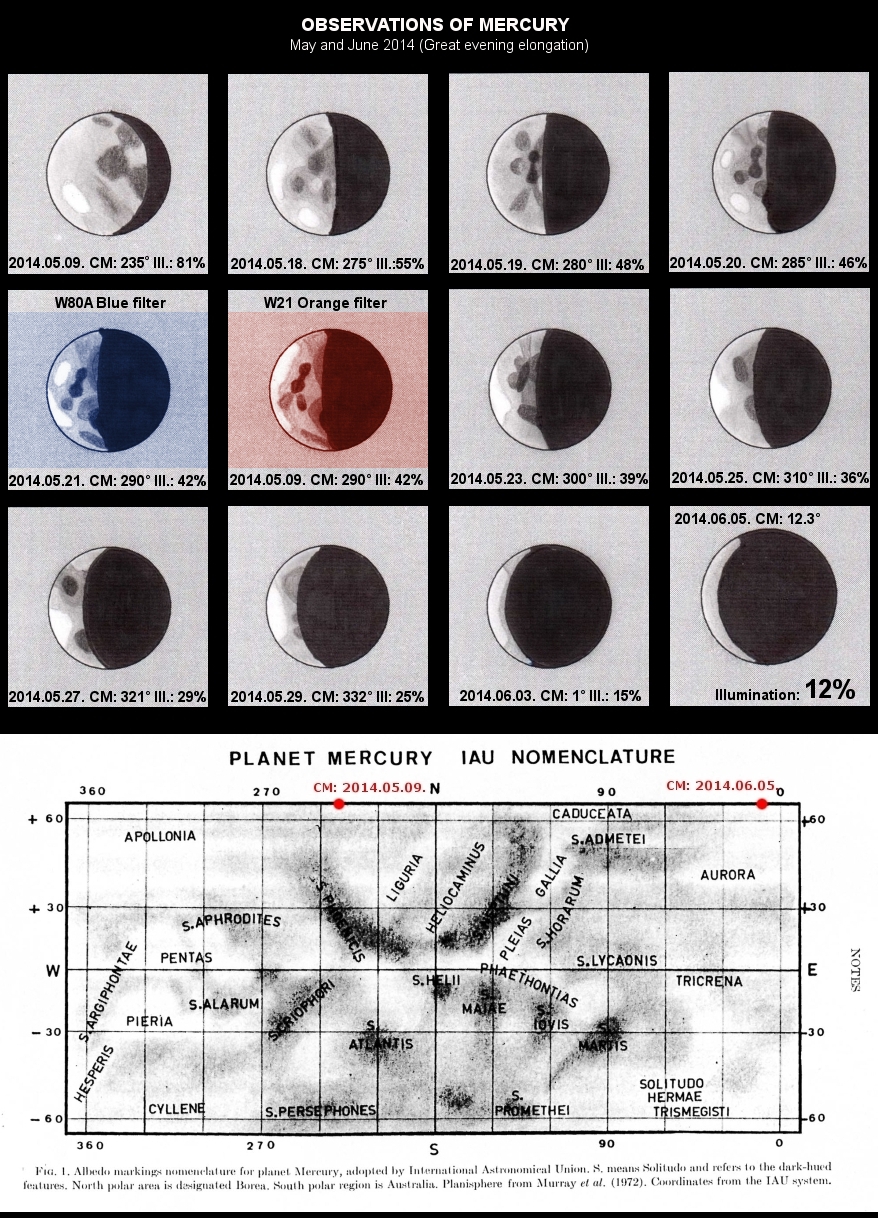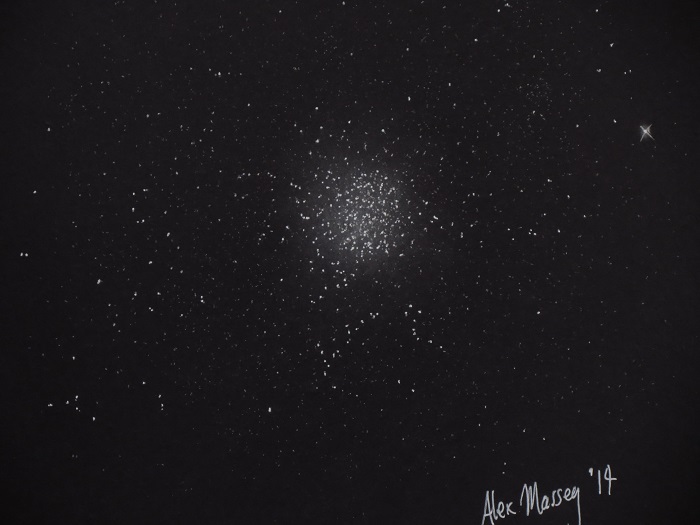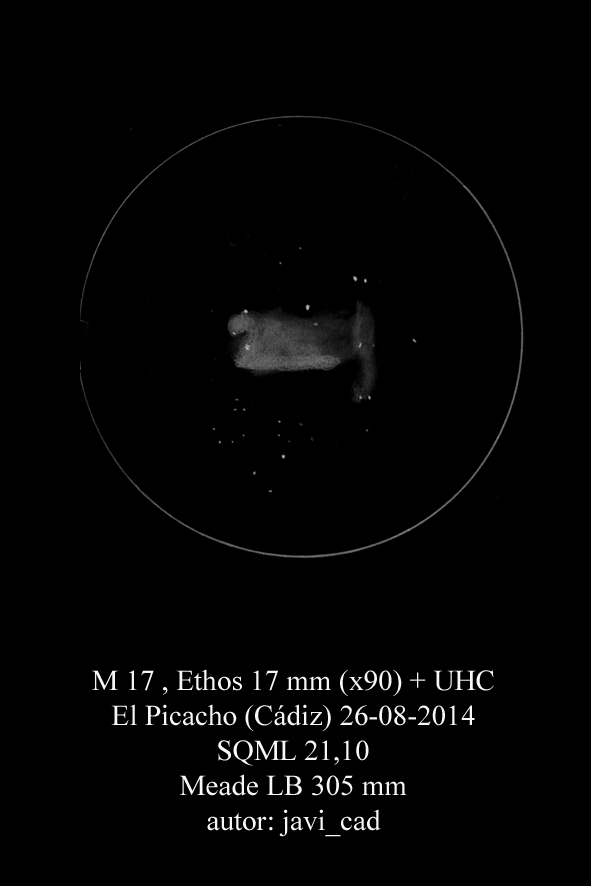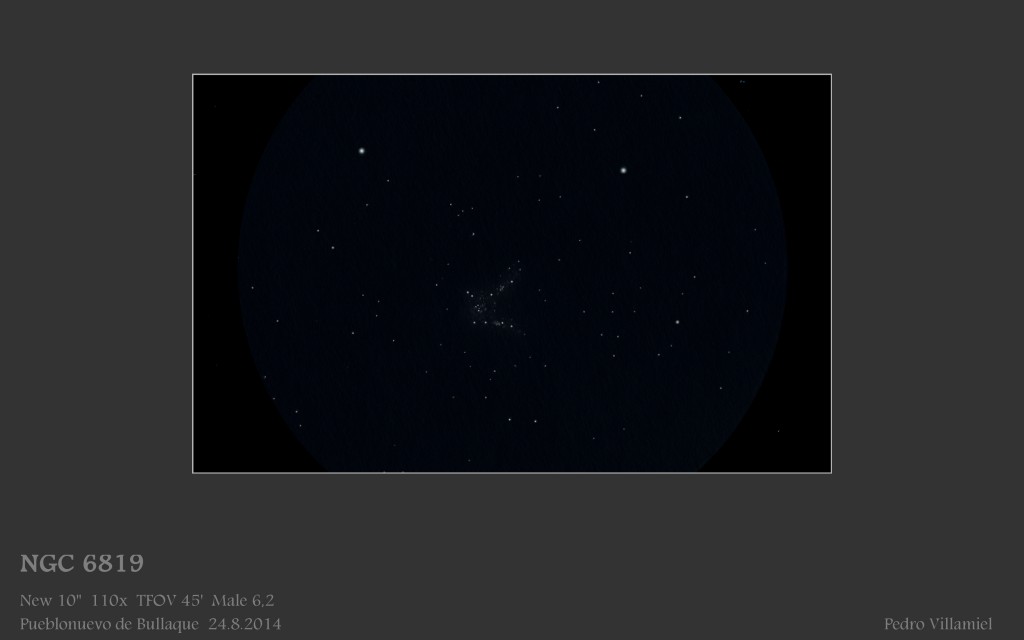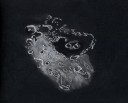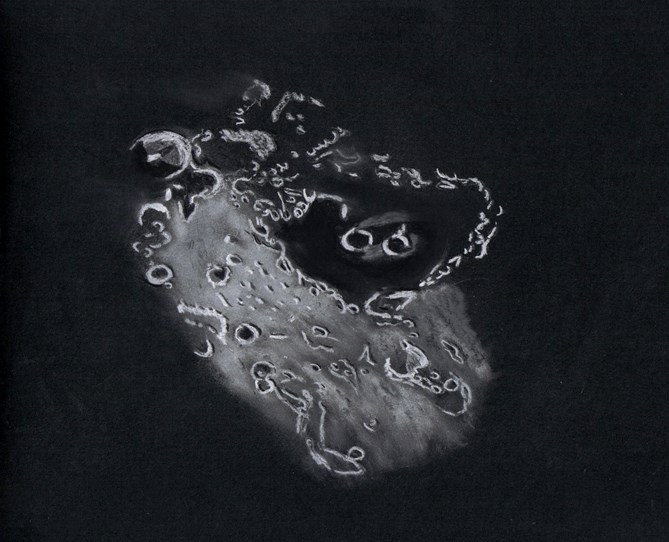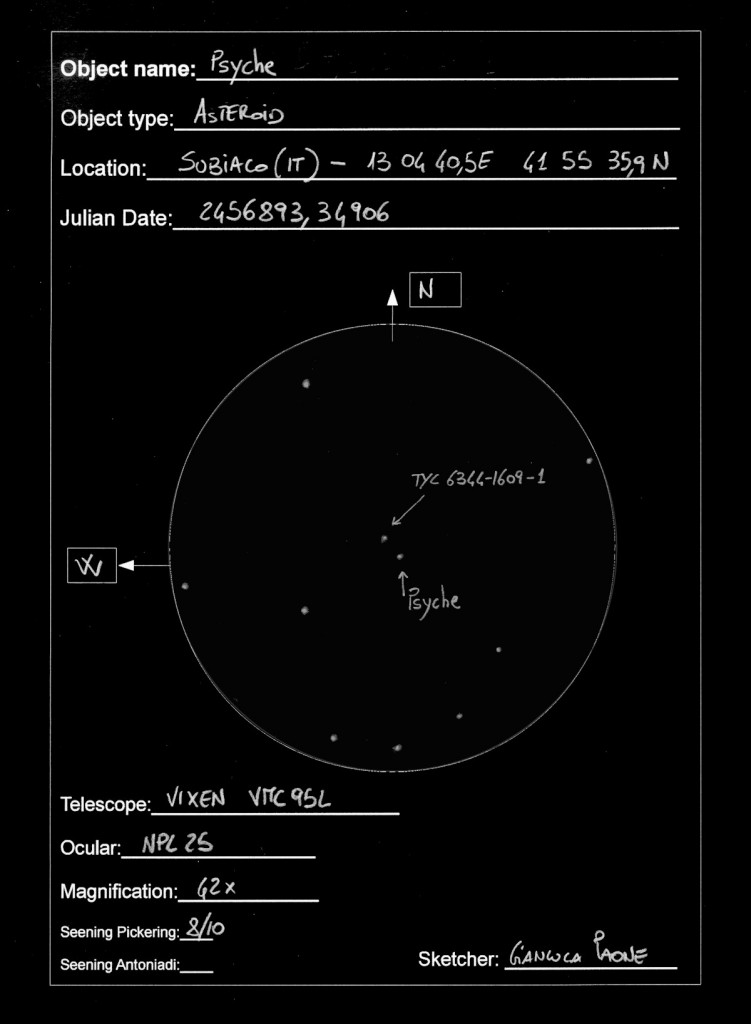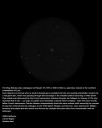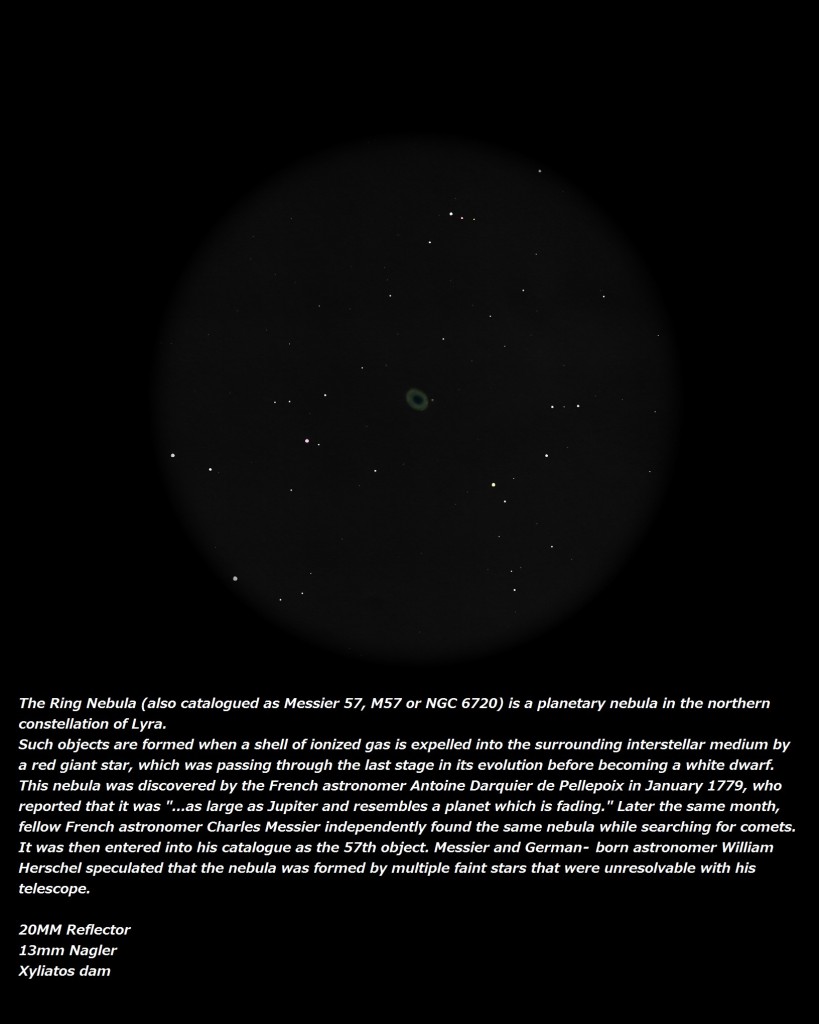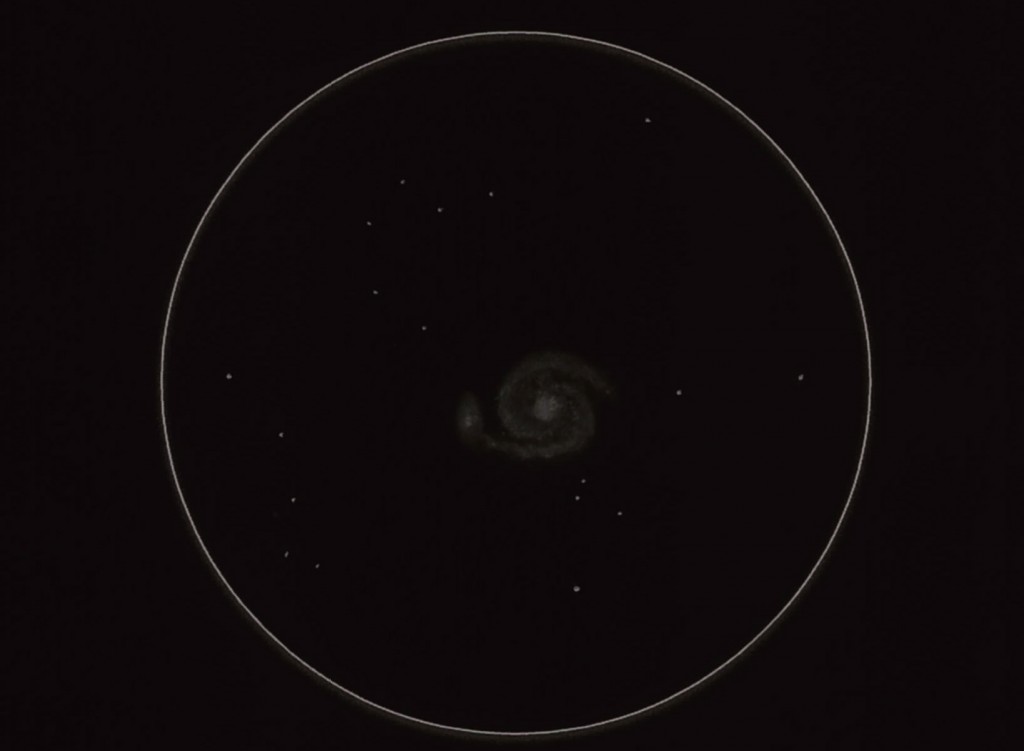
Object Name: M51
Object Type: Galaxy
Location: Morella (Spain)
Date: 30/07/2014 – 22:18 UTC
Media: white paper, graphite pencil, 7B, HB, scanned and inverted with Paint
Equipment: GSO Newton 6″ f/5 + Hyperion 13mm (57x)
Sky conditions: Very good seeing and transparency, no light pollution and clear sky
Notes: At the eyepiece field I can see two white cores of different brightness and size, surrounded by a faint and grey nebulosity. M51B(smallest galaxy) has elliptical nebulosity and M51A has round nebulosity. It’s not difficult reveal two spiral arms around M51A’s core, which one of them ends in M51B. This is my first astronomy sketch.
Thank you.

